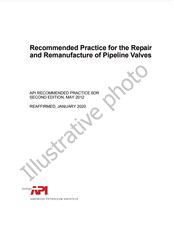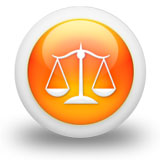We need your consent to use the individual data so that you can see information about your interests, among other things. Click "OK" to give your consent.

API RP 571-ed.3
Damage Mechanisms Affecting Fixed Equipment in the Refining Industry
Translate name
STANDARD published on 1.3.2020
The information about the standard:
Designation standards: API RP 571-ed.3
Publication date standards: 1.3.2020
SKU: NS-1140145
The number of pages: 376
Approximate weight : 1159 g (2.56 lbs)
Country: American technical standard
Category: Technical standards API
Annotation of standard text API RP 571-ed.3 :
API RP 571, 3rd Edition, March 2020 - Damage Mechanisms Affecting Fixed Equipment in the Refining Industry
This recommended practice discusses damage mechanisms applicable to oil refineries; however, much of the information herein can also be applied to petrochemical and other industrial applications, as the user deems appropriate. It is up to the user to determine the applicability and appropriateness of the information contained herein as it applies to their facility.
API 571 is a reference document that provides useful information by itself and also complements other API standards and recommended practices. The document should be utilized as a reference to other integrity related documents. It is intended to contribute to the overall management of pressure equipment integrity and is a useful resource for many mechanical integrity program activities including:
- a) identification of existing damage or deterioration and anticipated rates of degradation,
- b) identification of future damage mechanism susceptibilities,
- c) development and maintenance of inspection and monitoring strategies, programs, and plans (e.g. per API 510, API 570, and API 653),
- d) implementation and monitoring of integrity operating windows (IOWs) (see API 584),
- e) development of corrosion control documents (CCDs) (see API 970),
- f) implementation of Risk-Based Inspection (RBI) programs (see API 580 and API 581),
- g) conducting Fitness-For-Service (FFS) assessments (see API 579-1/ASME FFS-1),
- h) application of proper examination techniques, and
- i) conducting pressure equipment integrity incident investigations (see API 585).
The information for each damage mechanism is provided in a set format as shown below.
— Name of the Mechanism—The term commonly used to describe or name the mechanism.
— Description of Damage—A basic description of the damage mechanism.
— Affected Materials—A list of the materials prone to the damage mechanism.
— Critical Factors—A list of factors that affect the damage mechanism (i.e. rate of damage).
— Affected Units or Equipment—A list of the affected equipment and/or units where the damage mechanism commonly occurs. This information is also shown on generic process flow diagrams (PFDs) for typical process units.
— Appearance or Morphology of Damage—A description of the damage mechanism, with pictures in some cases, to assist with recognition of the damage.
— Prevention/Mitigation—Methods to prevent or mitigate the damage and in some cases to evaluate by engineering analysis.
— Inspection and Monitoring—Guidance for nondestructive examination (NDE) and other methods for detecting, monitoring, characterizing, sizing, and determining the severity or extent of damage or deterioration.
— Related Mechanisms—A list of related damage mechanisms.
— References—A list of references cited, relied upon, or that provide background and other pertinent information.
Generic PFDs are provided in Section 4 to assist the user in determining primary locations where some of the significant damage mechanisms are commonly found.
We recommend:
Updating of laws
Do you want to be sure about the validity of used regulations?
We offer you a solution so that you could use valid and updated legislative regulations.
Would you like to get more information? Look at this page.



 Cookies
Cookies
